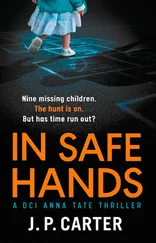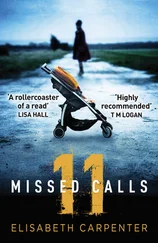One of the decoy girls starts differentiating herself from the others all of a sudden. She’s breathing hard, looking all around at the inside of the bus. Then I realize she’s actually looking outside the bus, at the things passing by.
“That’s my house,” she says.
No one moves.
“This is my neighborhood!” she says, louder. “I used to live here!”
Now she’s looking into each of our faces, as though we could tell her whether she’s right or wrong, or say, Good job! or something like that. It looks as though she is really animated and energized by what she sees, or what she remembers about what she sees. She must have good memories of living in this place, or someplace like it. I wonder what I’d do if I looked out the window and saw my old house, or C’s old house, but then I realize that I might not even remember what those things look like anymore, and I stop thinking so that I don’t have to be sad.
Inside the compound, everything had looked the same. Out here, all we register is an endless mass of alien sprawl. Maybe that’s why nobody does anything about the girl shouting about her town: we can’t even see her town, can’t make it out amid all the outside that’s going past. We aren’t used to looking off into distances, only across the room. Some of us think she’s just showing off. After a while, her energy damps down and her mouth shuts again. She sits back into her seat and looks like she isn’t sure anything has happened after all.
When we get there, they stow us in a big room full of little cots arranged in two long lines, like in a Victorian infirmary, the space between them so narrow that you hit your knees if you try to turn around. I can tell they tried to make it look like home, but they got so many things wrong: the fluorescents are circles instead of bars, the cots have scratchy blankets on them that are just whatever colors instead of the bloody crimson we’re used to. And then there’s a big window onto the outside that they’ve covered up, but I can still feel that it’s there behind the cardboard, changing color and content as the day goes on. I know that I’m going to be sleeping here for a certain number of days, but I want to go as long as I can before I touch any of the weird new bedding. C used to play a game with me called “What’s the Worst That Could Happen?” where he’d ask me that question and I’d try to tell him. C invented it to show me that the scenarios I worried about were outlandish and unlikely to happen, but it turned out that he found my answers funny, so then we played it for other reasons. What’s the worst that could happen if I touched these foreign things? I could forget the one place I still remembered very clearly, my bed in the room of beds at the Church of the Conjoined Eater.
We’re far from the compound and they didn’t bring enough Kandy Kakes for all of us, so I only get four. It’s almost a relief, I think, pushing the Kandy silt around inside my mouth. Each one is just as difficult to eat, but at least the meal is over faster.
SINCE THE EATERS HAD TAKENover the daily operations of TMP! there had been some changes to the music, the decor, the corporate sponsors. Instead of the plush, swirly fuchsia carpeting on the main stage, everything was black and white, harshly gridded. The floor was dizzy with contrasting tiles that sprawled hundreds of feet; it was hard to look at, and when you walked on it you felt as if you were on a boat. Instead of the blood-red curtains that divided the main stage from the musical stage, the curtains were dark, deep blue, the color of the ocean at a depth where there’s still light, but barely, and the pressure would crush you like a plastic cup. Celebrity appearances made for higher ratings, so now there was a guest host, a new one each show, a recognizable celebrity who performed in the dance number and donated their likeness, who let the makeup artists inscribe them on each of our faces, one by one. Sitting in the television hall, we had watched the famous faces of singers, models, and movie stars waltz past the camera in multiple. We saw so little face in our daily life that seeing one made multitude sickened us with expression and the particularity of its parts.
There had also been changes to the format of the show. The musical number in the show’s second challenge was far too popular to change very much, but the first and third challenges were in flux. The first challenge used to take place on a typical game show set, both contestants seated on opposite sides of a wall. After the preliminary questions (“What color are her eyes?”), each contestant was shown photos of body parts and asked whether they belonged to the person they loved or to somebody else. The highest-scoring contestant went on to the next round. Recently, the first round had become more haphazard. Sometimes the host asked the questions or showed the photos, but neither contestant was given time to answer: the round took minutes, and then there was an extended celebratory sequence where the couple was filmed enjoying some veal that they had been given as a prize or playfully spraying each other with cans of Slumbertime Soda. Often the round made even less sense: one partner was given access to a stocked buffet while the other tried to guess which foods they were eating from it. I saw one where the two players just sat on opposite sides of the wall, staring, until suddenly the host declared that one of them would go on to the next round. I had never liked this show, but even I could admit that our version of it was worse, in terms of entertainment value.
I LIKED SOME OF THEchanges to the final round — for example, the fact that the all-nude blackout round no longer took place in the dark. Now the player wore a blindfold and their partner wore a gag, so that even if the player couldn’t see the person they were looking for, the person they were looking for could see them and try to get near them. The success rate was just as low, but the charade was more hopeful.
Eaters made great decoys: we had consistent body types, were paid in Kandy Kakes, and had absolutely no schedule conflicts. We would be the first all-Eater decoy cast for an episode of TMP! We weren’t the healthiest or most coordinated performers, though, and I could tell that the choreographers who worked with our bodies were getting frustrated. They were outside people. They looked at us and it was as if you could see the questions twisting around inside their faces. They took us first to a large, bright room with warm yellow wood floors that looked like living wood, but better. There were mirrors on all the walls, extending from the floor to well above our heads, and a wooden bar ran across them. The bar looked like it was there to demarcate, keeping us or our reflections from trying to cross into the other’s realm. They lined us up and told us to keep our arms out while we kicked, for balance. They said it was a simple kick pattern to start, right and then left with the right foot, right and then right with the left foot. Then right, then left, then a right with the left, and after that two more rights. That wasn’t what we called them back at the compound, where we knew that the right hand/leg was the Light one and the left was the Dark one and each could be located on either side of the body owing to random genetic variation and body baffles. But all right. Outside rules. We named our different sides with temporary labels that we would peel off later, once things were normal again.
The real problem was we couldn’t see ourselves in the mirror. We weren’t dumb, we knew what we looked like: I, for example, would have dark hair down to my back or possibly put up in a ponytail, a pointy chin, pale features, and lips pressed together or open, their shape a little like the shell of a clam or scallop. In our mirror line, I could pick myself out fairly confidently since I was second from the end, flanked on both sides by blond girls. It was just when we started kicking that it got confusing: looking for my legs instead of my face, I saw a mass of them scissoring away, some in sync and others badly off. I thought about my legs: What was I doing with them? Which set of mirror movements did they match up with? Was I doing well, or was I the girl third from the right whose ankles quivered as if they were about to snap? We weren’t used to mirrors anymore. There hadn’t been any at the Church.
Читать дальше
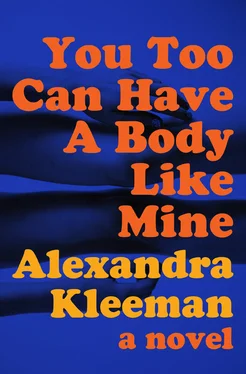

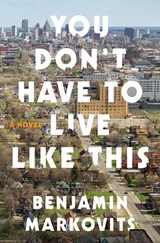
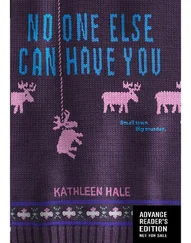
![Ally Carter - [Gallagher Girls 01] I'd Tell You I Love You But Then I'd Have to Kill You](/books/262179/ally-carter-gallagher-girls-01-i-d-tell-you-i-lo-thumb.webp)


